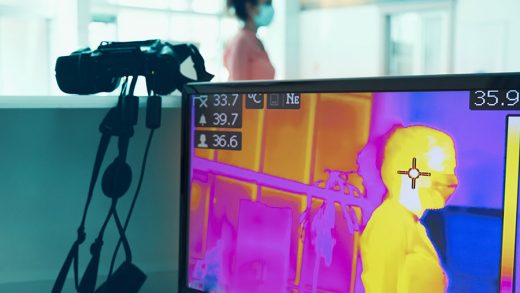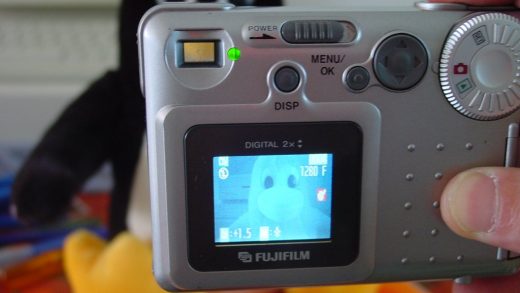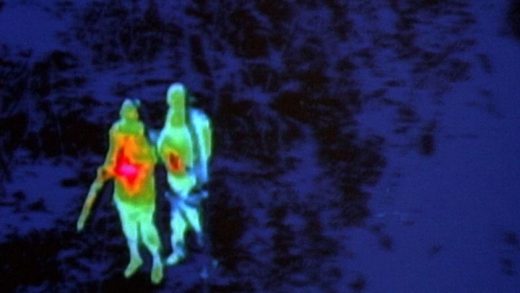A thermal rifle scope is an optic that uses thermal imaging to detect heat instead of light. Thermal imaging is used in night vision, but the technology has evolved enough that it can be used with other types of optics. The use of a thermal rifle scope allows the user to see very well even in conditions where using traditional night vision would not be possible. Since there are many different brands and models of thermal scopes, each offering its own design which affects performance, this article will focus on some specific things to look for when considering different models.
Benefits of using a thermal rifle scope
1) A thermal rifle scope allows the user to see in the dark.
2) Some models allow for detection at ranges where traditional night vision can not reach, allowing users to detect targets further away than they ever could with only night vision.
3) Thermal imaging will not be affected by bright lights or lasers like regular night vision optics.
4) Modern thermal scopes are compact enough that they can easily fit on most types of rifles and allow for use of the iron sights.
5) Thermal scopes can be used without having to remove your eye from the optic, allowing you to keep them on when switching back and forth between different types of optics, giving it more range than any other type of optic (traditional two eyes open).
6) Thermal scopes can be easily mounted to weapons and stay mounted without moving or affecting the point of impact like other types of optics.
7) Many thermal scopes offer the ability for multiple reticles, allowing you to choose between dots, circles, hashes, and many other patterns while some allow you to manually adjust the color hue and brightness.
8) The technology used in thermal imaging allows users to detect targets that would otherwise be obscured by dense brush or smoke as well as those under camouflage nets.
9) For those who use night vision devices often (LEO’s/Military), a thermal rifle scope can help extend the life of your current device since they will not need it as much during the day when using a thermal rifle scope.
10) Thermal rifle scopes are less affected by fog, dust, and debris.
11) Many thermal rifle scopes offer the ability to record video when in use, allowing users to document any incidents they may come across while using them on the field. Users can also remove their SD card and insert it into a computer or laptop to review footage like any other surveillance camera.
12) Thermal rifle scope technology is getting more compact by the day with models offering more features than previously thought possible at ever-smaller sizes; making it easier for everyday users to get their hands on these powerful tools.
13) Modern thermal rifle scopes offer single-hand operation, meaning you don’t need two hands-free to activate your optic like some traditional night vision devices.
14) Some thermal rifle scopes offer the ability to control and switch out different reticles at will, making it perfect for those who enjoy collecting memorabilia or taking pictures of their targets after a kill. This allows users to switch between different optics, such as picking between dots and circles, after every shot if they prefer.
15) Many models also allow you to zoom in on your target with incredible clarity; allowing you to see details that would otherwise be hard to detect with regular night vision because of distance or vegetation obscuring them from view. You can easily tell what kind of gear or uniform a person is wearing as well as other objects a person may have on them by zooming in and examining the image closely.
Things to consider when buying a thermal rifle scope
1) Price:
Price is a very important factor when considering a new thermal rifle scope. Keep in mind though that you generally get what you pay for and that a cheaper model will typically have more limitations on features while the more expensive ones may offer some of these same capabilities but with enhancements not found on their lesser priced counterparts. There are many quality models available at all different price points so it’s best to do your research before buying one to make sure you get something within your budget while also getting the most from your money. One way users try to save money on their optics is by purchasing used models, however, this can prove risky since these devices are often exposed to harsh elements which can cause damage or degradation to the device’s performance over time. Common issues with used models are internal fogging, broken lenses and circuit boards as well as degraded batteries which can limit the battery life or decrease the amount of time you have to use it before it dies. These problems are common on used thermal scopes but they can be avoided by buying a new one straight from the manufacturer, allowing users to ensure their device works properly right off the bat without any hassles later down the line.
2) Durability & Build Quality
A crucial factor when considering your optic is how durable it is because you will want something that lasts for years instead of having to buy a new one every few months if it breaks easily after being dropped or mishandled in some way. Most manufacturers claim that their thermal riflescopes are impact-resistant, but only field tests will prove if this is true or not. You can also look into buying a plastic model which won’t break as easily as its metal counterparts when dropped, allowing you to use it without fear of damaging it if you happen to trip and fall over with your device in your hands.
3) Magnification
Magnification levels vary depending on the model you choose but most thermal rifle scopes usually come with two different magnification settings, 2x and 4x. A higher magnification level allows for better target acquisition at longer ranges while lower magnification models are more suitable for close-range shooting because they don’t enlarge the picture very much meaning that small holes are easier to see through them although this also means the image is more likely to be blurry. Higher magnification models are also heavier and bulkier which can make it harder for some people to hold their rifle still when aiming through them because of how heavy they are, making shooting at smaller targets very difficult even if you have excellent aim.
4) Field of View
The field of view has a direct impact on the overall viewing area of your thermal device. The wider the FOV, the larger field you will see in front of you while using it; allowing you to detect multiple targets at once during hunting or target shooting sessions. Narrow FOV limits what you can see in real-time so keep this in mind before buying one so that you don’t find yourself with an optic that doesn’t meet your needs.
5) Resolution
Resolution is determined by the number of pixels available on your device, allowing you to determine how clear or blurry objects will appear when viewed through it. Higher-resolution models are better for determining finesse details while lower resolution ones can make these same details very hard to see because they are so blurred out which can be annoying when trying to figure out if something is friend or foe in the heat of the moment.
6) Temperatures & Weatherproofing
Thermal scopes aren’t affected by certain temperatures like visible light models so don’t worry about using yours during warm weather or cold weather. Modern thermal devices are actually pretty diverse regarding their behavior in different environmental conditions but there are some models which perform better than others when it comes to hot and cold weather. Make sure your model can operate in the seasons you plan on using it in before buying one so that you get the best performance possible at all times.
7) Battery Life
Battery life varies depending on the make and model of your thermal scope; some devices last for 15 hours while others can operate for up to 30 hours before these units need to be charged again. A long battery life is important if you plan on using your device during long hunting or shooting sessions but keep in mind that more advanced models which have higher resolutions and FOVs will drain batteries faster than lower resolution ones, forcing you to change them out more often your sessions.
8) Ergonomics
Ergonomics are important because they allow you to handle your thermal rifle scope better which directly affects its accuracy. The best models come with ergonomic features like textured sights and additional space for the hands which allow you to easily aim through them without having to worry about dropping or losing control of your device. This is important if you plan on using your device during hunting sessions where dropping it would be a costly mistake.
9) Convergence Time
Convergence time refers to how long it takes for an object viewed through your thermal optic to reach its maximum temperature so that it can be properly identified as either harmful or harmless before this information reaches your brain, making it hard for you to quickly determine what’s going on in real time. The lower the convergence time, the faster you will know whether or not you’re looking at an enemy soldier in war zones and this is why it’s essential to consider buying a thermal rifle scope with a fast convergence time if you plan on using it for military purposes.
10) Resolution vs Amount Of Thermal Emissions
The resolution of your model has little impact on how much thermal emissions it can sense because no matter what resolution your device is; it’s still able to see objects emitting heat energy like gunshots, people, animals, vehicles, and other objects which would be important for snipers and hunters wanting to track their prey. Higher resolutions have more pixels available so they are better for picking up finer details but aren’t necessary when aiming at objects emitting heat energy.
11) Maximum Temperature
The maximum temperature of your model is important because it sets the limit to how hot thermal scopes can sense things before they become too blurry for you to properly aim through them. The higher the maximum temperature, the better equipped your device will be at picking up even the smallest sources of heat like campfires and brief flashes of light by weapons fire which could mean life or death in combat situations.


